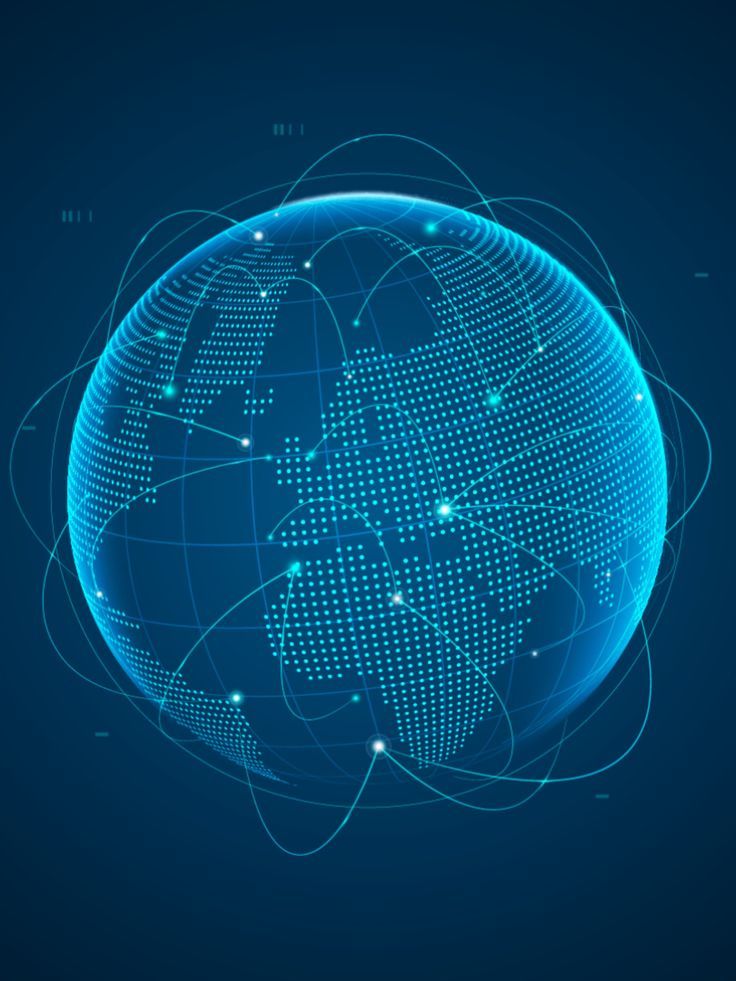The pervasive influence of Artificial Intelligence (AI) is undeniably the defining technological narrative of our era. Far from being a futuristic concept, AI actively shapes our connected world in profound, often subtle, ways, fundamentally transforming how we interact with technology, information, and each other. From optimizing our daily commutes and personalizing our digital experiences to driving breakthroughs in science and industry, AI is no longer just a tool; it’s an invisible architect, orchestrating a complex symphony of data, algorithms, and automated processes. This pervasive integration is not merely about convenience; it’s about unlocking unprecedented efficiencies, fostering deeper connections, and propelling humanity toward a future where intelligence is woven into the very fabric of our digital and physical realities.
The Genesis of Intelligence: Tracing AI’s Evolution
To truly grasp the monumental impact AI has on our connected world today, it’s essential to understand its fascinating and often challenging journey from theoretical concepts to tangible applications.
A. Early Aspirations: Foundations of AI
The idea of intelligent machines captivated thinkers long before the advent of modern computers. The formal pursuit of AI, however, began in the mid-20th century.
- Turing Test (1950): Alan Turing’s seminal paper, “Computing Machinery and Intelligence,” proposed the “Imitation Game,” now known as the Turing Test, as a criterion for machine intelligence. This provided a foundational philosophical challenge for AI researchers.
- Dartmouth Workshop (1956): Considered the birthplace of AI as an academic discipline, this summer workshop officially coined the term “Artificial Intelligence.” Researchers laid out the core goals: simulating human intelligence, problem-solving, and abstract thinking.
- Early Symbolic AI: The initial phase focused on symbolic reasoning, expert systems, and logic programming. Programs like ELIZA (a chatbot simulating a psychotherapist) and SHRDLU (which could understand and act in a limited virtual block world) demonstrated early potential but quickly hit limitations in dealing with real-world complexity and ambiguity.
- AI Winters: Periods of reduced funding and diminished interest followed periods of over-optimism. The limitations of early symbolic AI and the computational power available at the time led to disillusionment, often referred to as “AI winters.”
B. The Rise of Machine Learning: Data as the New Fuel
The true resurgence of AI began with a shift from explicit rules and symbols to learning from data, ushering in the era of Machine Learning.
- Statistical Approaches: Instead of hard-coding rules, AI began to employ statistical methods to find patterns in data. This was a critical pivot that allowed systems to learn from experience.
- Neural Networks Re-emerge: Inspired by the human brain, artificial neural networks had existed for decades but were limited by computational power. Advances in algorithms (like backpropagation) and hardware began to make them more viable for complex pattern recognition tasks.
- Big Data Explosion: The proliferation of digital data (from the internet, sensors, mobile devices) provided the massive datasets necessary to train complex machine learning models effectively. More data led to better learning.
- Computational Power Surge: The exponential growth in computing power, particularly the advent of powerful Graphics Processing Units (GPUs) originally designed for video games, proved perfectly suited for the parallel computations required by neural networks, enabling deeper and more complex models.
C. Deep Learning and Generative AI: Unprecedented Capabilities
The last decade has witnessed breathtaking advancements, primarily driven by deep learning and now, generative AI.
- Deep Learning Breakthroughs: Leveraging multi-layered neural networks (deep neural networks), deep learning achieved unprecedented accuracy in areas like image recognition (AlexNet’s ImageNet victory in 2012), speech recognition, and natural language processing. This led to widespread adoption in consumer applications.
- Generative Adversarial Networks (GANs): Introduced in 2014, GANs allowed AI to generate incredibly realistic new data (images, text, audio) by pitting two neural networks against each other.
- Transformer Architecture: The development of the Transformer architecture in 2017 revolutionized NLP, enabling the creation of large language models (LLMs) like GPT-3, which can generate human-like text, translate languages, and answer complex questions with remarkable fluency.
- Multimodal AI: The ability of AI models to understand and generate content across different modalities (text, images, audio, video) simultaneously.
- Democratization of AI: Cloud platforms (AWS, Azure, Google Cloud) have made powerful AI services accessible to businesses and developers of all sizes, lowering the barrier to entry and accelerating adoption across industries.
This rapid progression has catapulted AI from academic research into the core fabric of our connected world, influencing nearly every digital interaction we have.
AI’s Pervasive Presence: Shaping Our Digital Experiences
AI is no longer a niche technology; it is seamlessly integrated into countless aspects of our daily digital lives, often operating invisibly to enhance our experiences.
A. Personalized Digital Ecosystems
AI algorithms are the engines behind the hyper-personalized digital experiences that have become commonplace, adapting content and services to individual users.
- Recommendation Engines: From Netflix suggesting movies, Amazon recommending products, to Spotify curating playlists, AI analyzes our past behavior, preferences, and similar user data to provide highly relevant suggestions, increasing engagement and satisfaction.
- Personalized Content Feeds: Social media platforms (Facebook, Instagram, TikTok) and news aggregators use AI to filter and prioritize content, ensuring users see posts most likely to interest them, fostering stickiness and extended usage.
- Targeted Advertising: AI processes vast amounts of demographic, behavioral, and contextual data to deliver highly targeted advertisements, making advertising more relevant to consumers and more effective for businesses.
- Adaptive User Interfaces: Some applications use AI to subtly adapt their interface layout or feature prominence based on user habits and context, aiming for a more intuitive and efficient user journey.
B. Enhanced Communication and Language Processing
AI has transformed how we communicate, breaking down language barriers and augmenting our linguistic abilities.
- Real-time Language Translation: Tools like Google Translate use sophisticated AI to provide near real-time translation of text, speech, and even images, enabling global communication and understanding across linguistic divides.
- Speech Recognition and Virtual Assistants: Voice assistants (Siri, Alexa, Google Assistant) leverage AI to understand natural language commands, perform tasks, and provide information, making human-computer interaction more intuitive and hands-free.
- Natural Language Generation (NLG): AI can generate human-like text for various purposes, including automated news summaries, personalized marketing emails, customer service responses, and even creative writing, increasing content creation efficiency.
- Sentiment Analysis: AI can analyze text to determine the emotional tone or sentiment, widely used in customer service, social media monitoring, and market research to understand public opinion and customer satisfaction.
C. Smarter Search and Information Retrieval
AI has made information more accessible and relevant, transforming how we find and consume knowledge.
- Contextual Search: Modern search engines (like Google Search) use AI to understand the intent behind queries, provide more relevant results, and even answer complex questions directly, moving beyond simple keyword matching.
- Image and Voice Search: AI enables searching using images (e.g., Google Lens) or voice commands, expanding the ways users can interact with information.
- Information Summarization: AI can quickly process long documents or articles and provide concise summaries, helping users grasp key information more efficiently.
- Knowledge Graphs: AI constructs knowledge graphs that connect entities and concepts, enabling richer, more interconnected search results and factual information.
D. Streamlined Operations and Automation
AI drives automation beyond simple repetitive tasks, optimizing complex processes across industries.
- Robotic Process Automation (RPA): AI-powered RPA bots automate rule-based, repetitive digital tasks across various software applications, improving efficiency in back-office operations, customer service, and data processing.
- Predictive Maintenance: In industrial settings, AI analyzes sensor data from machinery to predict failures before they occur, enabling proactive maintenance, reducing downtime, and extending equipment lifespan.
- Supply Chain Optimization: AI optimizes logistics, inventory management, and route planning, leading to more efficient supply chains, reduced costs, and faster delivery times.
- Fraud Detection: AI algorithms analyze vast transaction data to detect fraudulent patterns in real-time for banks and financial institutions, minimizing financial losses and enhancing security.
AI’s Transformative Impact Across Key Sectors
AI’s influence extends far beyond individual digital experiences, fundamentally reshaping entire industries and creating new possibilities.
A. Healthcare and Life Sciences
AI is revolutionizing healthcare, from drug discovery to patient care.
- Drug Discovery Acceleration: AI analyzes vast biological and chemical datasets to identify potential drug candidates, simulate molecular interactions, and predict drug efficacy, significantly accelerating the research and development process.
- Personalized Medicine: AI analyzes patient data (genomics, medical history, lifestyle, real-time biometrics) to recommend personalized treatment plans, predict disease risks, and optimize drug dosages for individual patients.
- Medical Imaging Analysis: AI-powered tools assist radiologists in analyzing medical images (X-rays, MRIs, CT scans) to detect anomalies, diagnose diseases (e.g., early cancer detection) with greater accuracy and speed than human eyes alone.
- Robotics in Surgery and Patient Care: AI-powered surgical robots assist surgeons with precision, while companion robots provide elder care and support in daily living.
B. Finance and Banking
AI is enhancing efficiency, security, and personalization in the financial sector.
- Algorithmic Trading: AI-driven algorithms execute trades at high speed based on market data analysis, optimizing investment strategies.
- Fraud Detection and Cybersecurity: AI identifies suspicious patterns in transactions and network activity to prevent financial fraud and cyberattacks in real-time.
- Credit Scoring and Risk Assessment: AI models analyze vast datasets to provide more accurate credit scores and risk assessments for loans, expanding access to credit while minimizing default rates.
- Personalized Financial Advice (Robo-Advisors): AI-powered platforms offer personalized investment advice, portfolio management, and financial planning, making sophisticated financial services accessible to a broader audience.
C. Transportation and Logistics
AI is making transportation safer, more efficient, and paving the way for autonomous mobility.
- Autonomous Vehicles: AI is the core technology enabling self-driving cars, trucks, and drones, promising increased safety, reduced traffic congestion, and optimized logistics.
- Traffic Management: AI analyzes real-time traffic data to optimize traffic light timings, reroute vehicles around congestion, and improve urban mobility.
- Logistics Optimization: AI optimizes delivery routes, warehouse operations, and supply chain networks, leading to reduced fuel consumption, faster deliveries, and lower operational costs.
- Predictive Maintenance for Fleets: AI monitors vehicle health to predict maintenance needs, reducing breakdowns and extending vehicle lifespan.
D. Retail and E-commerce
AI is revolutionizing how we shop, from personalized experiences to optimized operations.
- Personalized Shopping Experiences: AI powers personalized product recommendations, dynamic pricing, and tailored promotions based on individual customer behavior and preferences.
- Inventory Management: AI forecasts demand, optimizes inventory levels, and automates reordering, reducing waste and ensuring product availability.
- Customer Service Chatbots: AI-powered chatbots handle routine customer inquiries, provide instant support, and escalate complex issues to human agents, improving customer satisfaction and reducing operational costs.
- Supply Chain Efficiency: AI optimizes last-mile delivery, warehouse automation, and logistics, speeding up fulfillment and reducing shipping costs.
E. Education and Learning
AI is personalizing education and making learning more accessible and effective.
- Adaptive Learning Platforms: AI analyzes student performance and learning styles to create personalized learning paths, providing tailored content, exercises, and feedback.
- Intelligent Tutoring Systems: AI tutors can provide one-on-one support, answer student questions, and guide them through complex subjects, acting as a supplement to human teachers.
- Automated Grading and Feedback: AI can assist in grading assignments and providing instant, constructive feedback to students, freeing up educators’ time.
- Content Curation: AI helps discover and curate relevant educational resources based on learning objectives and student needs.
The Symbiotic Future: AI, Humans, and Ethical Considerations
As AI becomes more integrated into our connected world, the discussion shifts from what AI can do to how it should be designed, governed, and integrated responsibly, fostering a symbiotic relationship with humanity.
A. Human-AI Collaboration and Augmentation
The future of AI is not about replacing humans entirely, but about augmenting human capabilities and fostering collaboration.
- AI as a Copilot: AI tools act as intelligent assistants, helping professionals in various fields (e.g., coding assistants, writing aids, medical diagnostic support) to perform tasks more efficiently and effectively.
- Focus on Higher-Order Tasks: By automating repetitive and data-intensive tasks, AI frees up humans to focus on creativity, critical thinking, emotional intelligence, and complex problem-solving that require unique human attributes.
- Augmented Decision-Making: AI provides insights and recommendations, allowing human decision-makers (doctors, investors, urban planners) to make more informed and accurate choices.
- New Human Roles: The rise of AI will create entirely new job roles focused on AI development, training, oversight, and ethical governance.
B. Ethical AI: Ensuring Fairness, Transparency, and Accountability
The growing power of AI necessitates a strong focus on ethical principles to prevent unintended harm and ensure societal benefit.
- Bias Mitigation: AI models can perpetuate and even amplify societal biases present in their training data. Ethical AI focuses on identifying, measuring, and mitigating algorithmic bias to ensure fair and equitable outcomes, especially in critical areas like hiring, lending, and criminal justice.
- Transparency and Explainability (XAI): Understanding how AI models make decisions (interpretability) is crucial. Explainable AI (XAI) aims to make AI systems more transparent, allowing developers and users to comprehend the rationale behind AI’s outputs, fostering trust and accountability.
- Privacy and Data Security: AI relies heavily on data. Ensuring robust data privacy (e.g., anonymization, differential privacy) and strong cybersecurity measures for AI systems is paramount to protect sensitive information and prevent malicious use.
- Accountability and Governance: Establishing clear legal and ethical frameworks for AI development and deployment, defining accountability for AI’s actions, and ensuring human oversight in critical AI systems are crucial.
- Human Values Alignment: Research into aligning AI’s goals and behaviors with human values to prevent unintended consequences and ensure AI systems serve humanity’s best interests.
C. Regulatory Frameworks and Policy Development
Governments worldwide are grappling with how to regulate AI effectively to harness its benefits while mitigating risks.
- AI Legislation: Developing laws and regulations that address AI’s unique challenges, such as data privacy, algorithmic discrimination, liability for autonomous systems, and intellectual property for AI-generated content.
- International Cooperation: Fostering global collaboration to develop harmonized AI standards and ethical guidelines, preventing regulatory fragmentation and promoting responsible AI development worldwide.
- Balancing Innovation and Regulation: Striking the right balance between fostering rapid AI innovation and implementing necessary safeguards to protect individuals and society.
- Standards for AI Safety: Developing technical standards for AI safety, robustness, and reliability, particularly for AI systems deployed in critical infrastructure or life-or-death scenarios.
D. Digital Divide and Equitable Access
The benefits of AI must be distributed equitably to avoid exacerbating the digital divide.
- Access to AI Technologies: Ensuring that developing countries and underserved communities have access to AI tools and the necessary infrastructure (internet connectivity, computing resources) to benefit from AI.
- AI Literacy and Education: Investing in education and training programs to equip the global workforce with the skills needed to thrive in an AI-powered economy.
- Addressing Job Displacement: Developing social safety nets, retraining programs, and new economic models to support workers whose jobs are impacted by automation.
- Inclusive AI Design: Designing AI systems that are culturally sensitive, accessible to diverse populations, and do not perpetuate existing societal inequalities.
The Future Trajectory: AI’s Continuous Evolution
AI’s journey is far from complete. Several exciting and transformative trends are poised to shape its continuous evolution and deeper integration into our connected world.
A. General Purpose AI (AGI) Research
While still a long-term goal, research into Artificial General Intelligence (AGI)—AI that can understand, learn, and apply intelligence across a wide range of tasks at a human-like level—will continue to be a significant driver of fundamental AI breakthroughs, even if direct AGI is decades away.
B. Multimodal and Embodied AI
AI will increasingly operate across multiple sensory inputs and interact with the physical world.
- Multimodal Understanding: AI models will seamlessly process and generate content across text, images, video, and audio simultaneously, leading to more intuitive and comprehensive interactions.
- Embodied AI: AI systems will be increasingly integrated into physical robots, leading to more capable and autonomous robots that can learn and adapt to complex, unstructured environments in the real world (e.g., advanced humanoid robots, robotic arms).
C. AI at the Edge and Hyper-Distributed Intelligence
The trend of processing AI close to the data source will accelerate.
- Edge AI Proliferation: More AI computations will occur directly on devices (smartphones, IoT sensors, industrial machinery), reducing latency, bandwidth needs, and enhancing privacy and security for real-time decision-making.
- Decentralized AI Networks: Concepts like federated learning (training AI models on decentralized data) and blockchain-based AI (for secure, transparent AI marketplaces) will enable more distributed and collaborative AI ecosystems.
D. AI in Science and Discovery
AI will become an even more indispensable tool for scientific research and discovery.
- Automated Scientific Discovery: AI will accelerate hypothesis generation, experimental design, data analysis, and the discovery of new materials, drugs, and scientific principles.
- Complex System Simulation: AI will enable more sophisticated simulations of complex biological, climate, and physical systems, leading to deeper understanding and predictive capabilities.
- Robotic Scientists: Autonomous labs where robots conduct experiments, collect data, and adapt protocols based on AI insights, drastically speeding up research cycles.
E. AI for Sustainability and Climate Action
AI will be leveraged increasingly to address global challenges, particularly climate change.
- Energy Optimization: AI optimizing smart grids, building energy consumption, and industrial processes to reduce energy waste.
- Climate Modeling: AI enhancing climate models for more accurate predictions and understanding of climate impacts.
- Resource Management: AI optimizing water usage, agricultural yields, and waste management to promote sustainability.
- Disaster Prediction and Response: AI analyzing environmental data to predict natural disasters and optimize emergency response efforts.
Conclusion
Artificial Intelligence is no longer merely an advanced computational tool; it is the fundamental force that shapes our connected world. From the personalized recommendations that curate our daily digital experiences to the complex algorithms that underpin autonomous vehicles and accelerate medical breakthroughs, AI’s influence is pervasive, profound, and continuously expanding. It has fundamentally reshaped industries, redefined our relationship with information, and unlocked unprecedented levels of efficiency and innovation.
While the journey of AI presents formidable challenges—ranging from ensuring ethical development and mitigating bias to managing job market transformations and establishing robust regulatory frameworks—the immense promise of a world augmented by intelligent systems remains compelling. The future trajectory of AI points towards even deeper integration, hyper-personalization, more sophisticated human-AI collaboration, and a pivotal role in addressing humanity’s most pressing global challenges. By embracing responsible development, fostering interdisciplinary collaboration, and proactively navigating its societal implications, we can ensure that AI continues to be a force for good, truly shaping a more connected, intelligent, and prosperous world for all.














